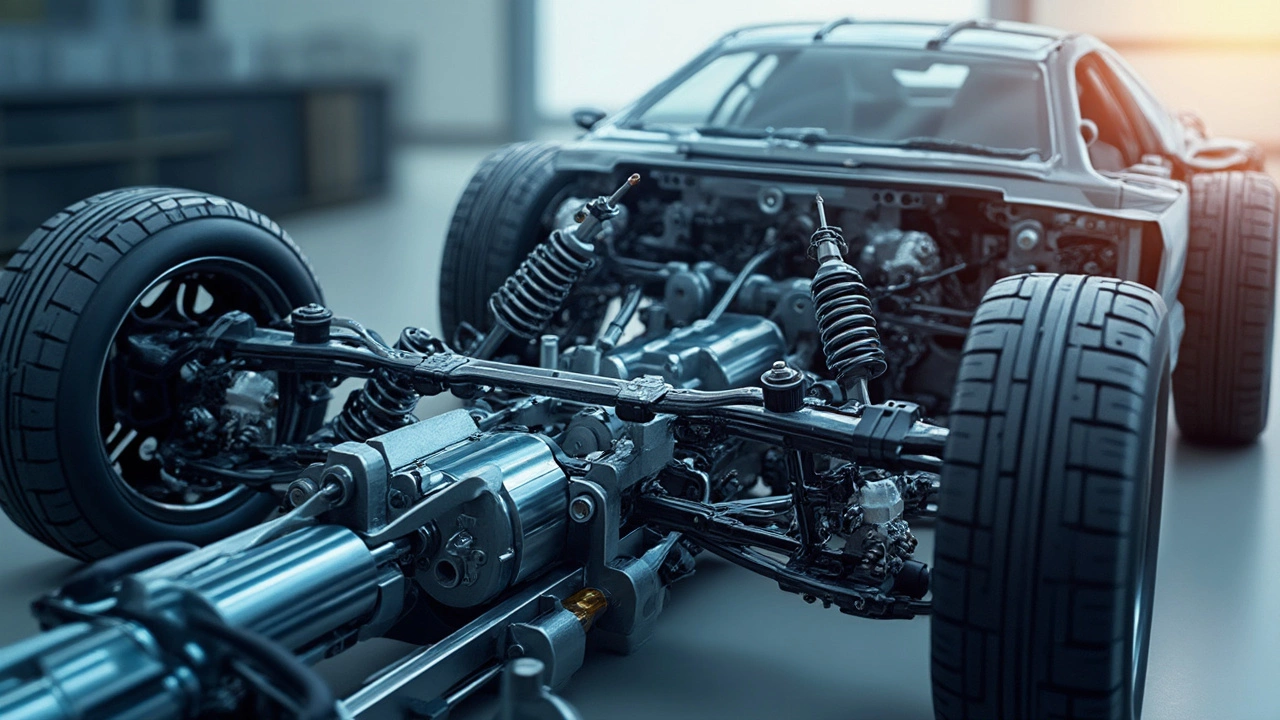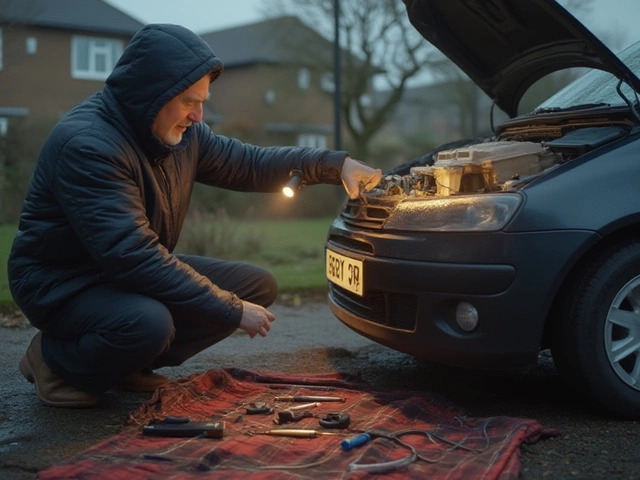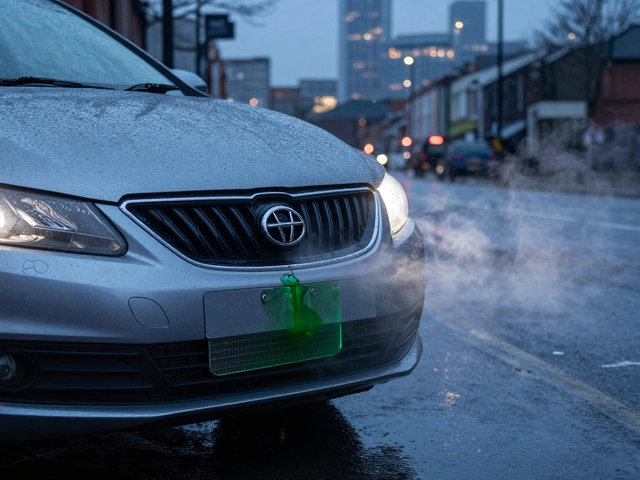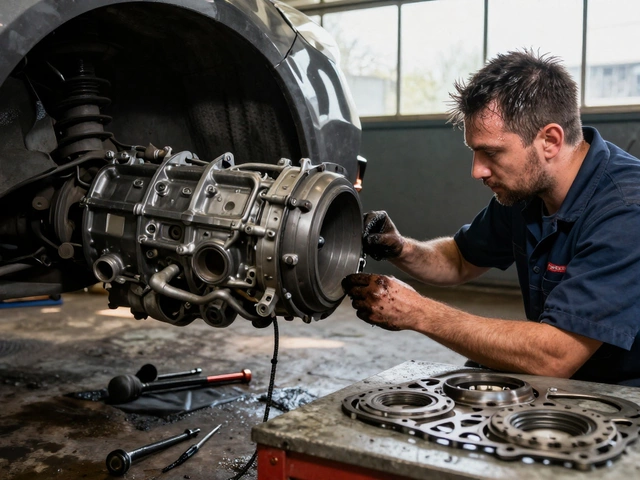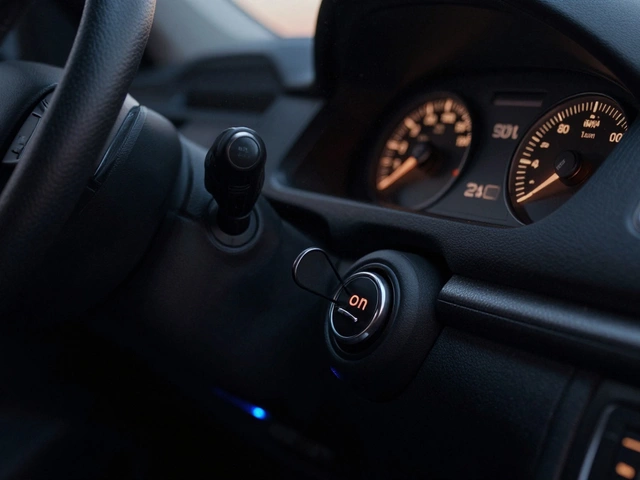When it comes down to keeping your car driving smoothly, the suspension system plays a huge role. It's not just about comfort; it's about safety, too. The front suspension is particularly important because it impacts steering and handling more directly than any other part. So, if you're thinking about replacing it, there are a few key things to keep in mind.
First up, you'll want to understand the basic components. We're talking about things like shock absorbers, springs, control arms, and bushings. Each of these parts works together to absorb the bumps and keep your wheels planted firmly on the road. If any of these parts are worn out, you're gonna notice it pretty quickly—think clunky noises, a rough ride, or wobbly steering.
One important tip? Always replace parts in pairs. If a shock absorber on one side is shot, the other one isn't far behind. Doing them together saves time and ensures balanced handling. Plus, swapping out old bushings for new ones can really tighten up the feel of your car's ride.
- Understanding the Front Suspension System
- Signs Your Suspension Needs Attention
- Critical Parts to Replace
- Tips for a Smooth Replacement
- Cost Considerations
- Maintaining Your New Suspension
Understanding the Front Suspension System
Your car's front suspension is a marvel of engineering that takes on a bunch of tasks all at once. It's not just about smoothing out the ride; it also keeps your vehicle stable and your tires in proper contact with the road. Let's break it down into its main components.
Key Components
Shock absorbers are like the suspension's peacemakers. They control the bouncing motion and keep everything calm after hitting a bump. Without them, your car would just keep bouncing until you slowed down or stopped.
Then you've got the springs, either coil or leaf. Their job is to support the vehicle’s weight and absorb the shock from road irregularities. When your car hits a bump, the springs compress and expand to maintain the car’s height and smooth out the ride.
Control arms act like the vehicle's skeleton, connecting the suspension to the frame. They're crucial for maintaining wheel alignment, which directly affects your steering and tire wear. If these aren't in good shape, your handling's gonna suffer.
The Role of Bushings and Sway Bars
Next up, we've got the bushings, small but mighty rubber pads that absorb noise and vibrations between the vehicle's parts. They make sure there's no metal-on-metal contact, which is essential for a quiet, smooth drive.
Sway bars, also known as stabilizer bars, do exactly what you think—they stabilize your car during sharp turns or rough patches. When you corner quickly, the sway bar transfers the weight from the outer wheels to the inside ones, keeping the car balanced and preventing it from tipping over.
How All This Works Together
All these parts combined form a complex system that requires every piece to function properly for your suspension to do its job. When one component fails, it can put extra stress on others and lead to more significant issues down the line. That's why understanding your front suspension isn't just for gearheads or mechanics. It's for anyone who wants to keep their car running smoothly and safely.
Signs Your Suspension Needs Attention
Wondering if your car's front suspension needs a check-up? It’s not as complicated as you might think. There are some telltale signs that can clue you in when something’s amiss.
Unusual Noises
If you hear clunking, knocking, or squeaking while driving or steering, it's a big red flag. These sounds usually come from worn-out suspension parts like bushings or ball joints.
Uneven Tire Wear
Take a closer look at your tires. If they're wearing out unevenly, it might be because your suspension isn’t distributing weight properly. This is one of those signs that creep up on you but can lead to bigger problems if left unchecked.
Rough Ride
Feeling every bump on the road? That’s a classic sign your shock absorbers or struts need attention. A healthy suspension should smooth out the ride, not amplify it.
Drifting or Pulling
Notice your car seems to drift to one side even when you're driving straight? That's often due to issues in the front suspension or alignment problems. It’s especially obvious on a flat road.
Dipping or Nose-Diving
Does the front end of your car dip down when you brake? That’s called nose-diving, and it's a hint that your suspension might not be in its prime. Good suspension should keep the car level, despite hard stops.
Keep an eye on these signs. They're not just small annoyances—they're important cues that your car's maintenance routine needs a little attention before things get worse.
To give you a better sense of what you're looking for, here's a quick table:
| Symptom | Possible Cause |
|---|---|
| Clunking Noise | Worn Bushings or Ball Joints |
| Uneven Tire Wear | Misalignment or Suspension Wear |
| Rough Ride | Worn Shock Absorbers |
| Drifting or Pulling | Misaligned Suspension |
| Nose-Diving | Faulty Struts or Shocks |
Being proactive about these issues doesn’t just enhance your driving experience; it keeps you and your passengers safe. Plus, tending to these early can save you time and money—no one wants to deal with a major suspension overhaul if they can avoid it!
Critical Parts to Replace
Replacing the front suspension components is kind of like going to the gym for your car. It makes everything feel tighter, more responsive, and, let's be honest, a lot safer. So, here are the key parts you don't want to overlook.
Shock Absorbers
These bad boys are the first line of defense in maintaining a smooth ride. Shock absorbers dampen the bumps on the road, and if they're worn out, you're in for a bumpy, uncomfortable ride. When replacing them, make sure to do both sides to keep things balanced.
Control Arms
Control arms hold your wheels to the frame and manage the suspension's motion up and down. If you notice a clunky noise every time you hit a bump, your control arms might be the culprit. New control arms can seriously improve your car's steering.
Springs
Springs support the vehicle's weight and absorb larger impacts. When they start to sag, your car’s ride height drops, compromising handling and stability. Keep an eye out for those tired old springs when doing a suspension overhaul.
Bushings
These are the unsung heroes of your car’s suspension parts. Although small, they isolate vibrations and reduce friction between metal components. As they wear down, you might experience vibrations and noise. New bushings can transform your driving experience.
Ball Joints
Ball joints act like the pivot between the wheels and suspension. These parts wear out with use, potentially causing uneven tire wear and vague steering response. Replacing them can sharp up the handling of your car.
Additional Components
While not as critical, other parts like tie rod ends and sway bar links can also wear out and affect your vehicle's performance. Checking these during a suspension overhaul might save you future headaches.
Before you dive into replacing the suspension parts, it's worth checking a few things like your budget and availability of parts for your specific car model. Going aftermarket may save you some bucks, but always balance cost against quality. And if DIY sounds daunting, getting a pro mechanic could be a good call.
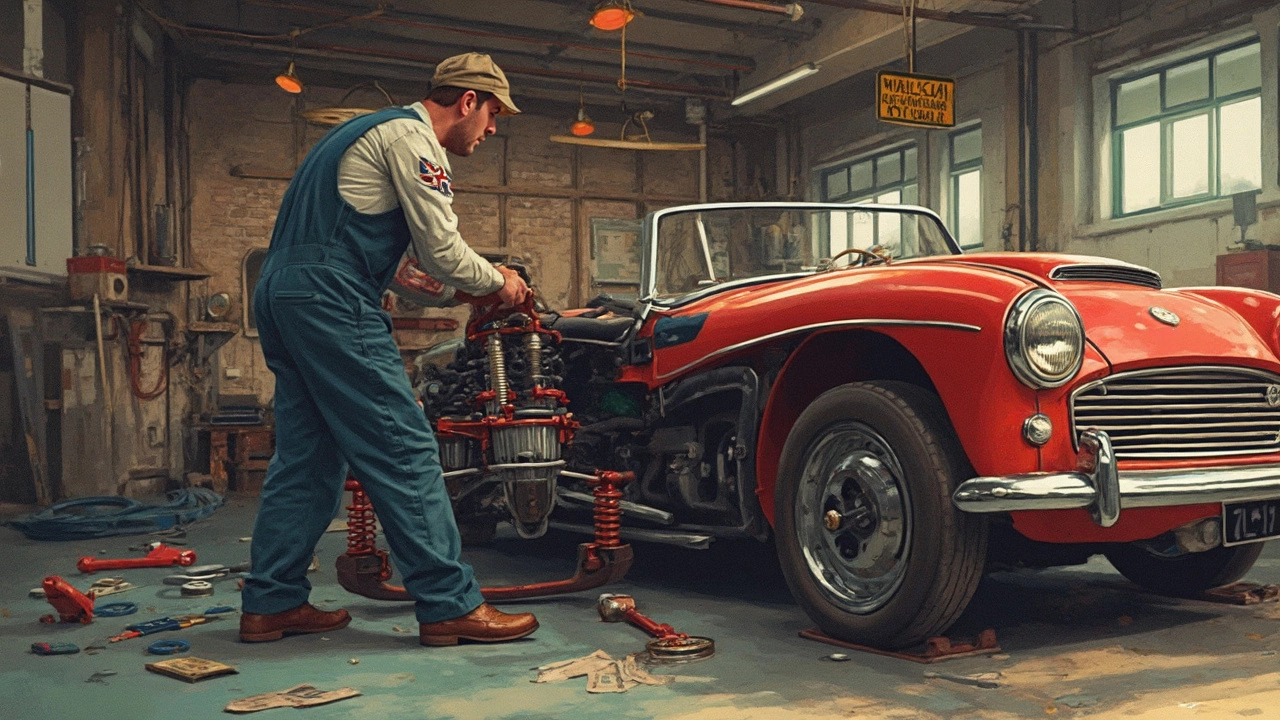
Tips for a Smooth Replacement
Tackling a front suspension replacement might sound daunting, but with some planning, you can make it a lot simpler. Here’s a handful of tips that can save you some headaches.
Prepare Your Workspace
Before diving into the work, make sure your car is parked on a flat surface. Safety is a priority, so chock the wheels and use high-quality jack stands. This ensures the car is stable, giving you a secure starting point.
Get the Right Tools
Having the right tools on hand is essential. At the very least, you'll need a socket set, wrenches, and a torque wrench. A ball joint separator can be a lifesaver when dealing with control arms. Trust me, it'll make the job much smoother.
Order Parts Ahead of Time
It sounds obvious, but plan ahead by ordering all necessary parts. Shocks, struts, control arms, and bushings vary between vehicles, so double-check your car's specific needs. Ordering everything at once can often save on shipping costs.
Follow a Step-by-Step Guide
Having a process in place helps prevent any steps from being missed. Break it down into manageable stages like removal, inspection, and installation. Here's a basic outline:
- Secure the car and remove the wheel.
- Detach old suspension parts carefully.
- Inspect surrounding components, replace if needed.
- Install new parts, following torque specs.
- Double-check everything before putting the wheel back on.
Using a repair manual or online guides specific to your make and model can offer detailed instructions that are a game-changer.
Consider Professional Alignment
After replacing your suspension, it's crucial to get a professional alignment. This ensures everything is balanced and prevents uneven tire wear. It’s not just about comfort; it's about vehicle safety too.
Here's a quick look at the potential differences in alignment outcomes:
| Unaligned | Aligned |
|---|---|
| May cause uneven tire wear | Even tire wear, improved handling |
| Steering might pull | Straight, controlled steering |
Finally, take your car for a test drive in a safe area to make sure everything feels right. Listen for unusual noises and pay attention to the handling. Success here means a job well done!
Cost Considerations
Alright, let's talk dollars and cents. Getting your front suspension sorted can be a pricey affair, but knowing what to expect can help you budget better and avoid surprises. The cost depends on various factors like your car model, the parts you need, and where you're getting the work done.
Parts and Labor Costs
When it comes to parts, you’re looking at items like shock absorbers, control arms, and bushings. Each of these components has its price tag, which can vary based on quality. For example, a pair of new shock absorbers might set you back anywhere from $100 to $300, depending on whether you choose standard or high-performance parts.
Labor costs can add up, too. Mechanics usually charge by the hour, with rates ranging from $75 to $150 depending on the shop and location. Replacing your suspension parts is no simple task and might take anywhere from two to four hours, so you’re looking at an additional $150 to $600 in labor charges.
DIY vs. Professional Replacement
If you’ve got a knack for car maintenance, you can save a fair bit by doing the work yourself. Just keep in mind that suspension work requires specific tools and a good understanding of the process. If you’re a pro at wielding a wrench and have access to the necessary gadgets, DIY could save on labor expenses.
Additional Costs and Budgeting
Don’t forget about potential extras. Alignments are often necessary after suspension work to make sure your car handles properly, and these could cost around $75 to $100. If you find your tie rods or ball joints are due for a change while you're at it, that’s another cost to account for.
To help you visualize the average expense, here's a simple table:
| Item | Estimated Cost |
|---|---|
| Shock Absorbers (pair) | $100 - $300 |
| Control Arms | $150 - $400 |
| Labor | $150 - $600 |
| Alignment | $75 - $100 |
Add it all up, and you're looking at a range of $475 to $1400, when everything's said and done. Hopefully, this gives you a clearer picture to plan your suspension upgrade accordingly!
Maintaining Your New Suspension
So, you've done it. You've replaced your front suspension and your ride's as smooth as butter. But wait, don't hit cruise control just yet. Keeping your new suspension in tip-top shape requires a bit of ongoing TLC.
Regular Inspections
Start by checking your suspension system every 10,000 miles or so. This means taking a close look at your control arms, shock absorbers, and other suspension components for any signs of wear and tear. It's a great way to catch potential problems before they get serious.
Wheel Alignment and Tire Care
A huge part of protecting your suspension parts is making sure your wheels are aligned properly. Misalignment can wear out your suspension faster than you can say 'ouch.' Also, rotate your tires regularly and check for even wear. Uneven tires can mess with your car’s handling and stress your suspension system.
Combat Corrosion
If you live in an area known for wet or salty conditions—hello, coastal folks—pay special attention to rust and corrosion. Clean your car’s undercarriage if there's a lot of grime or salt build-up. Believe it or not, a little spray with a garden hose can make a big difference.
Load Management
Finally, try not to overload your car. Heavy loads can exert extra pressure on suspension components like your springs and shocks. Stick to your vehicle’s weight limits to avoid unnecessary strain on your new gear.
Periodic Lubrication
Make sure all moving parts are well-lubricated. It’s a simple step but can make a significant impact on the longevity of your suspension parts. Just a bit of grease every few months can save you a lot of hassle down the road.
A little attention to detail goes a long way. Follow these tips, and your new suspension will keep running smoothly for miles to come.
